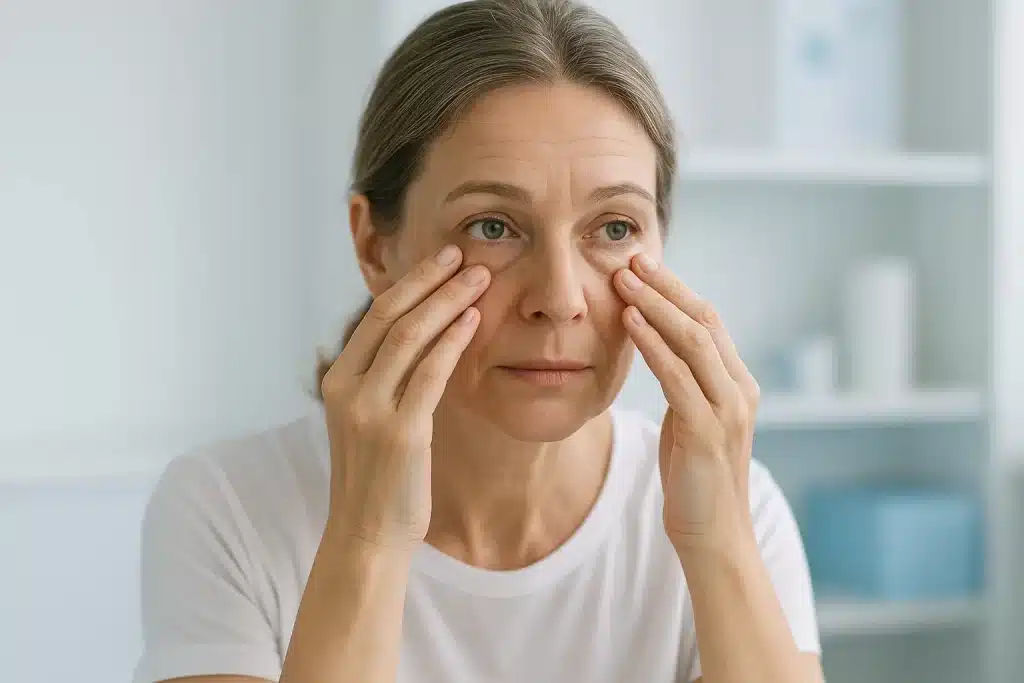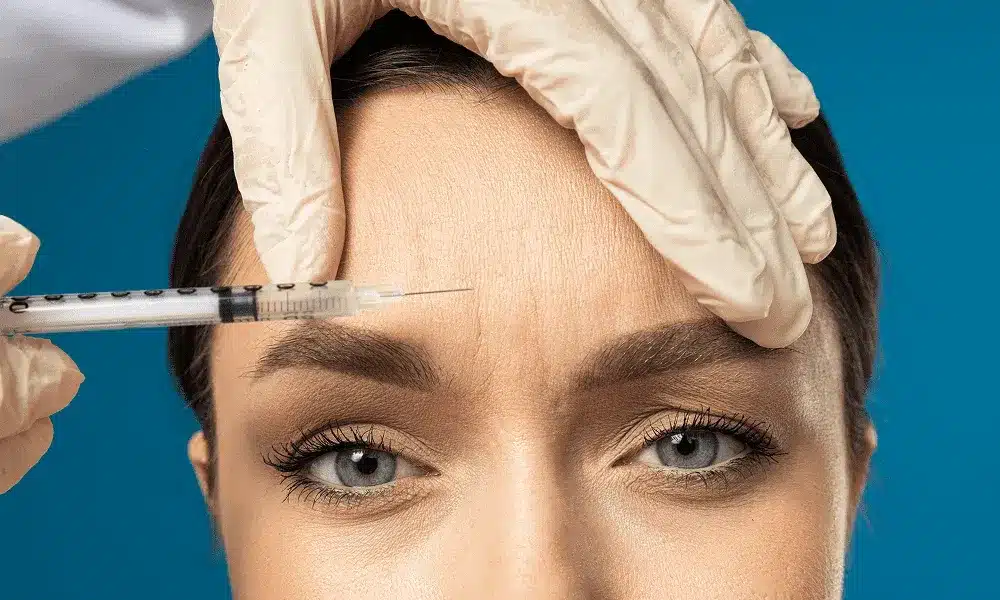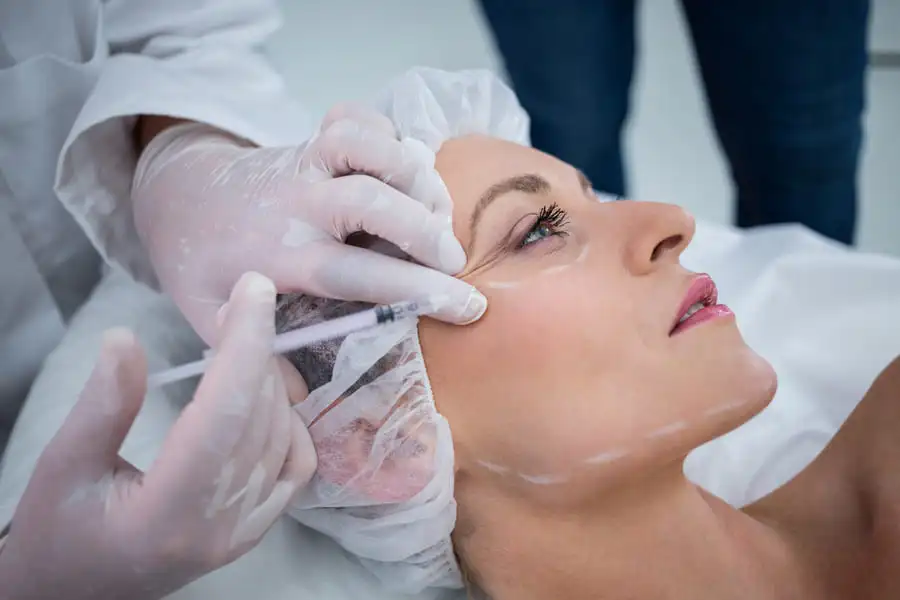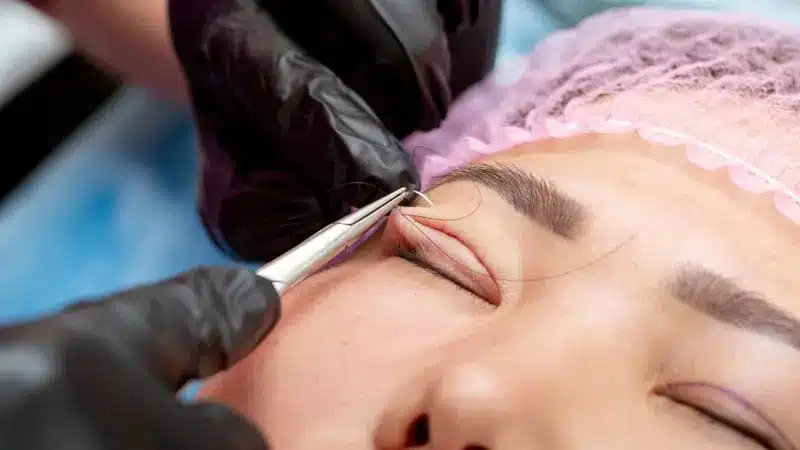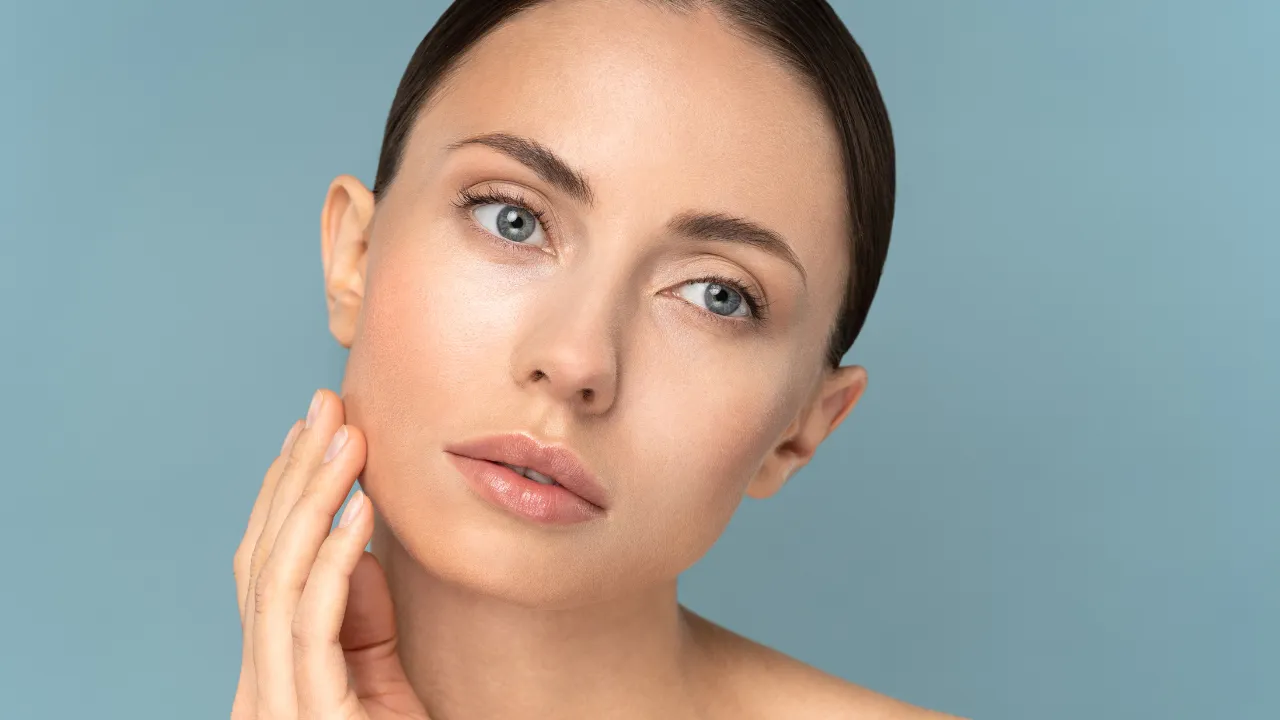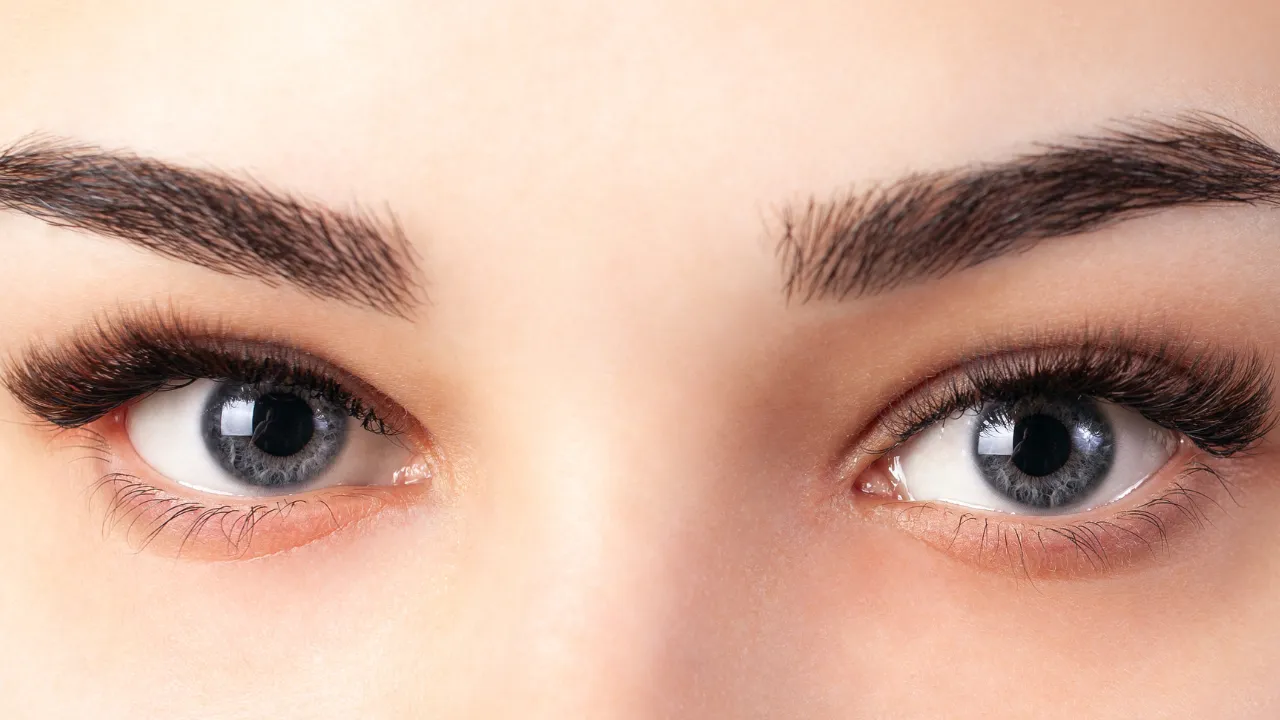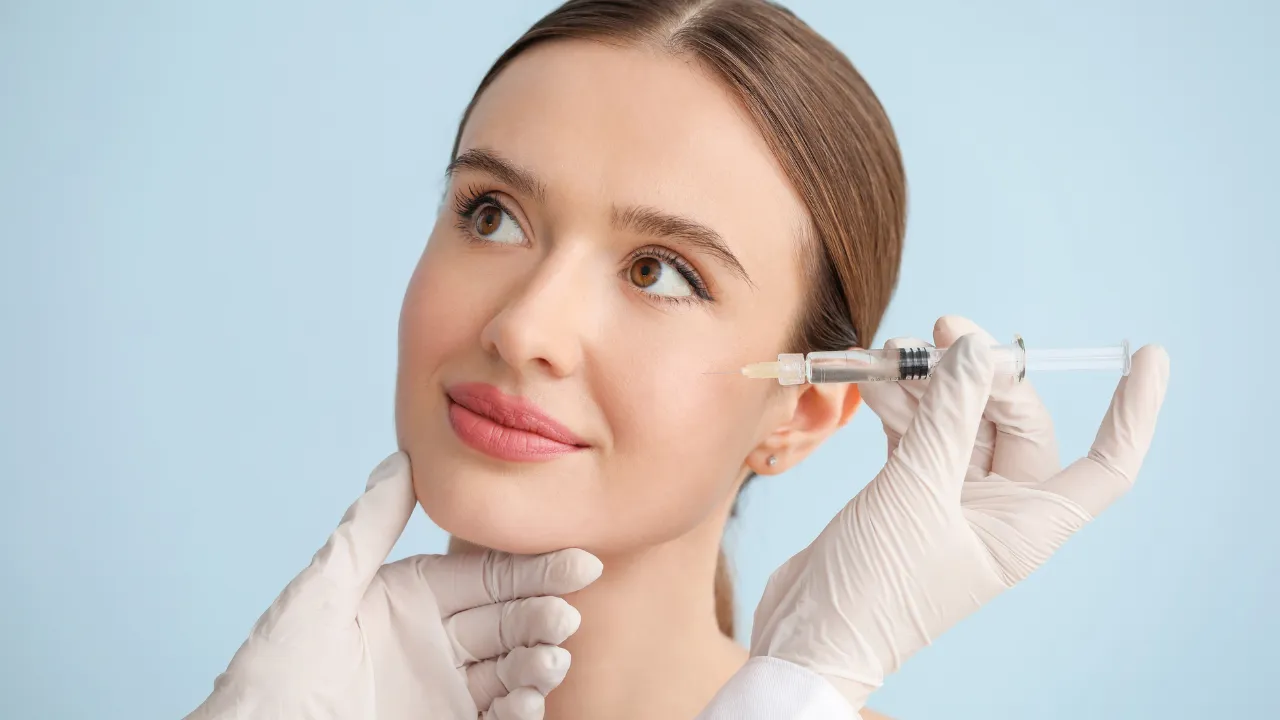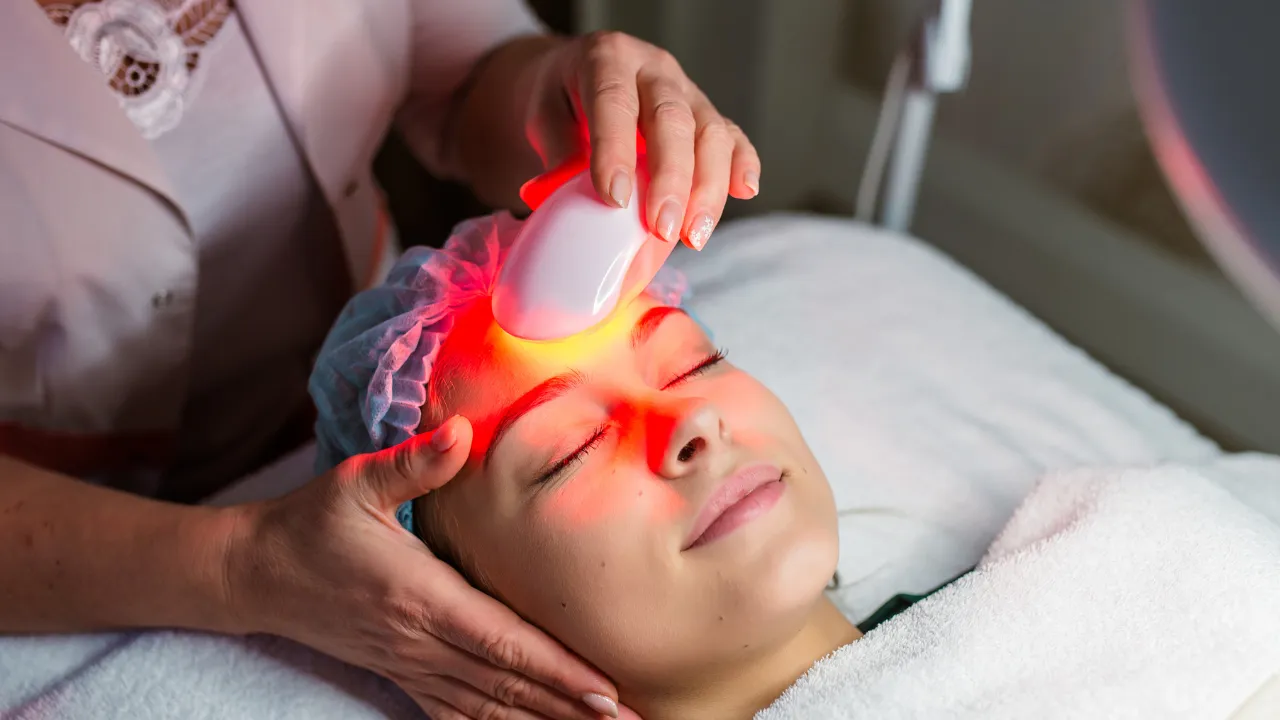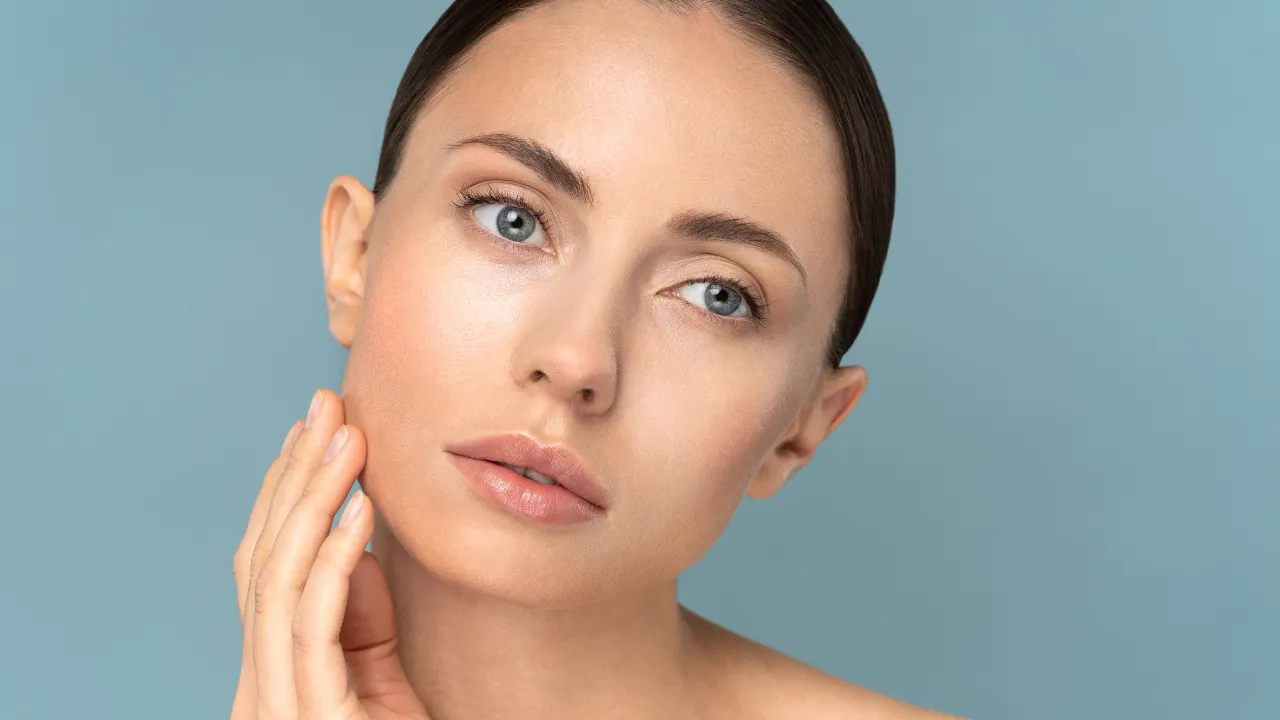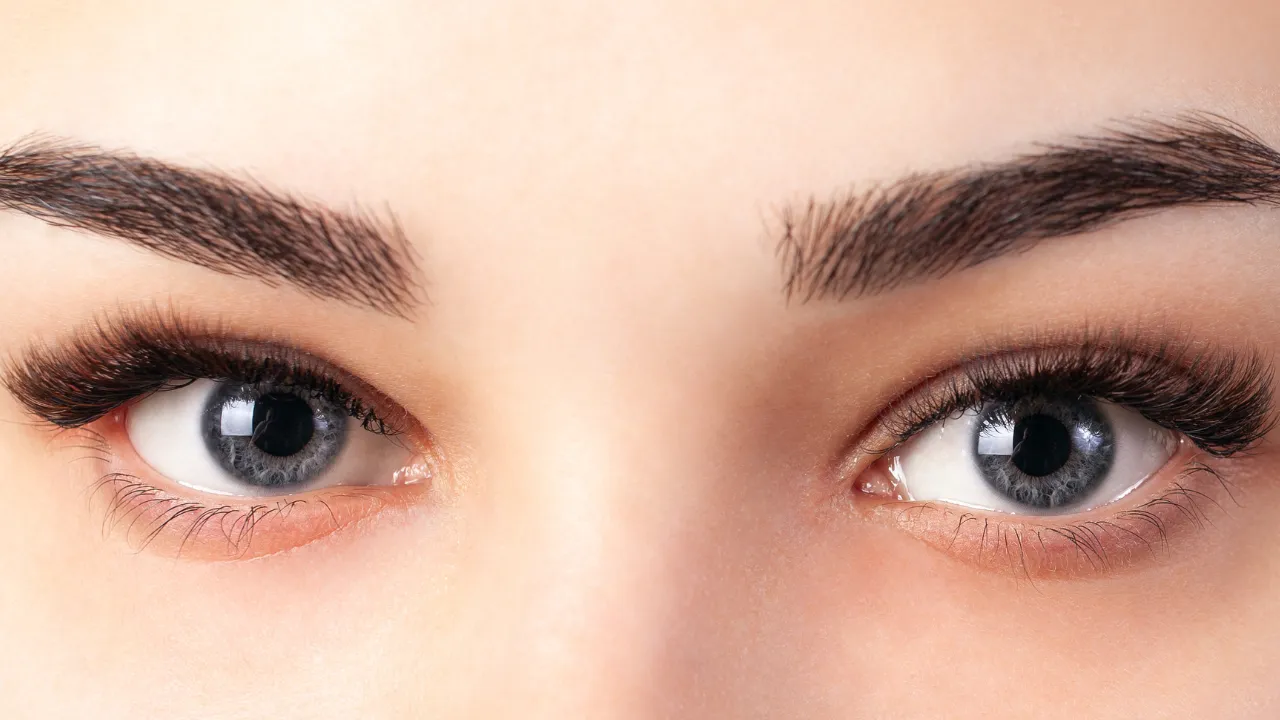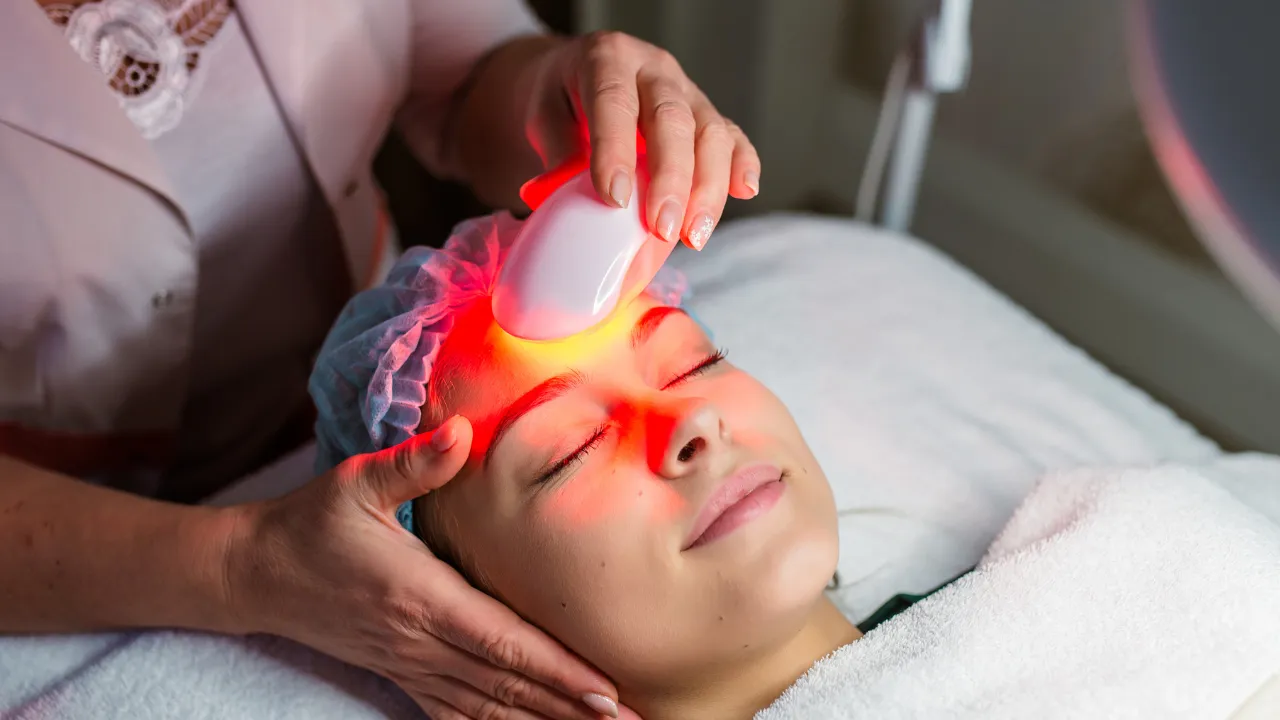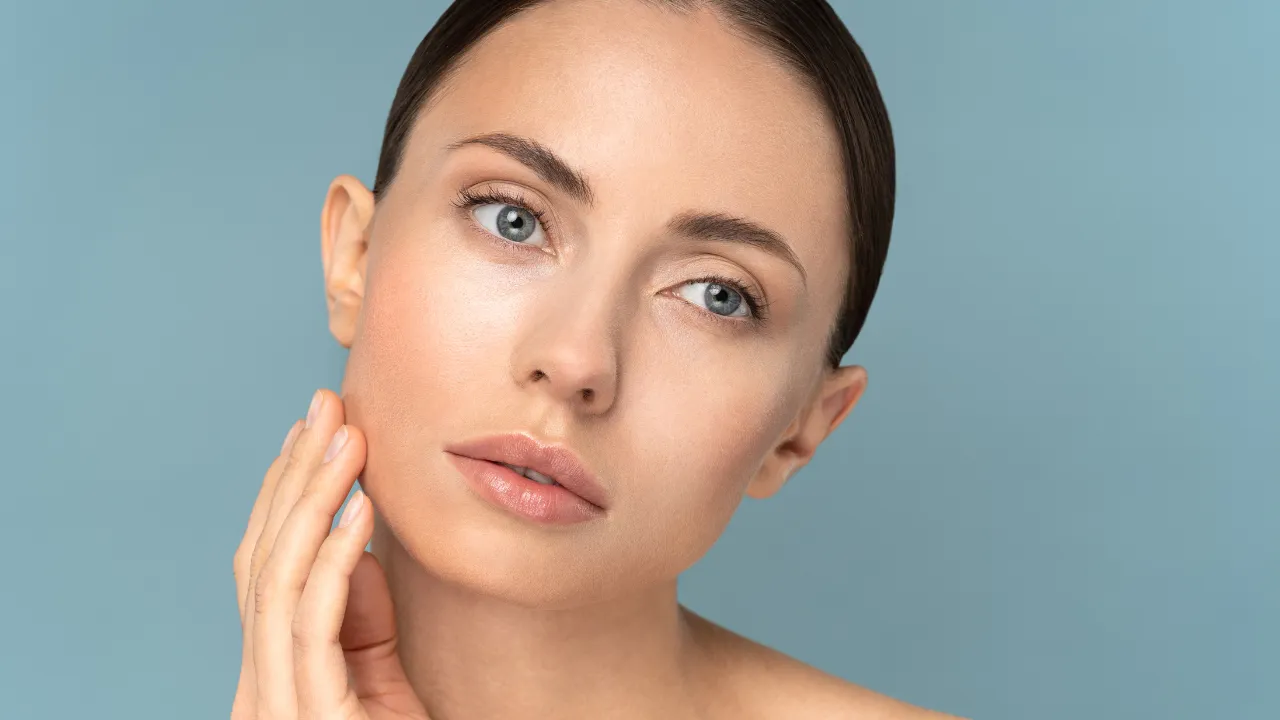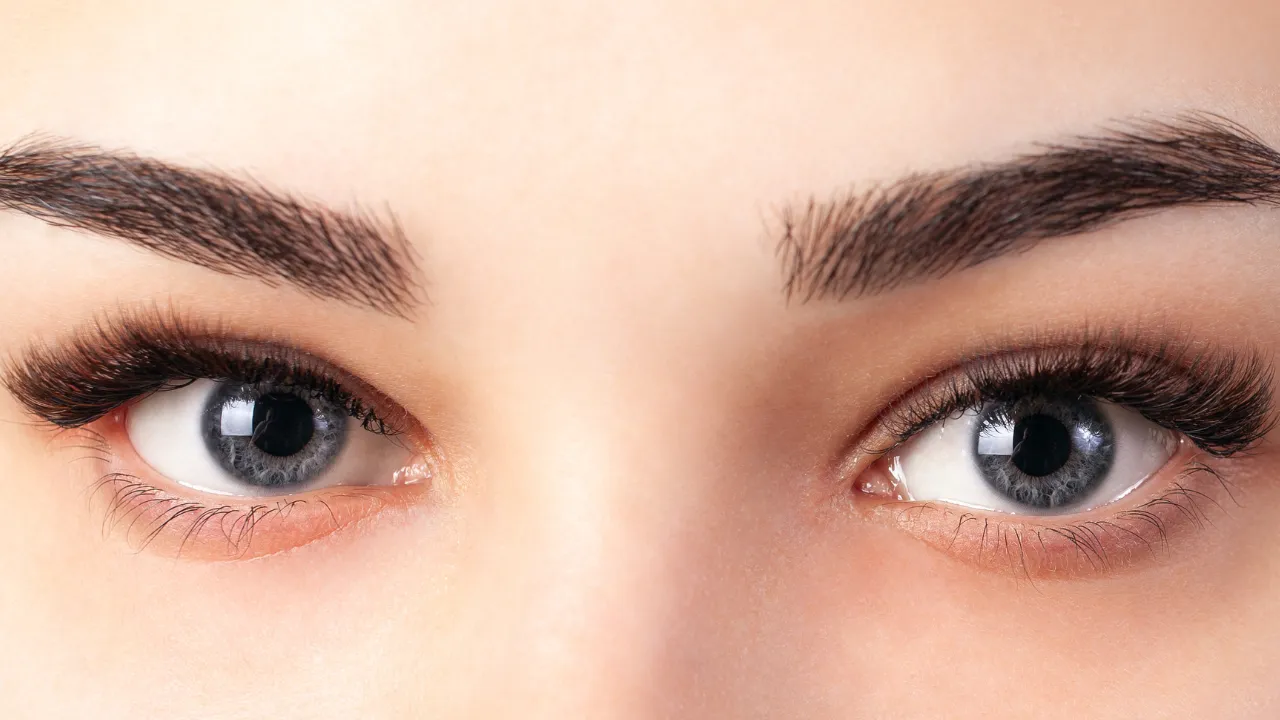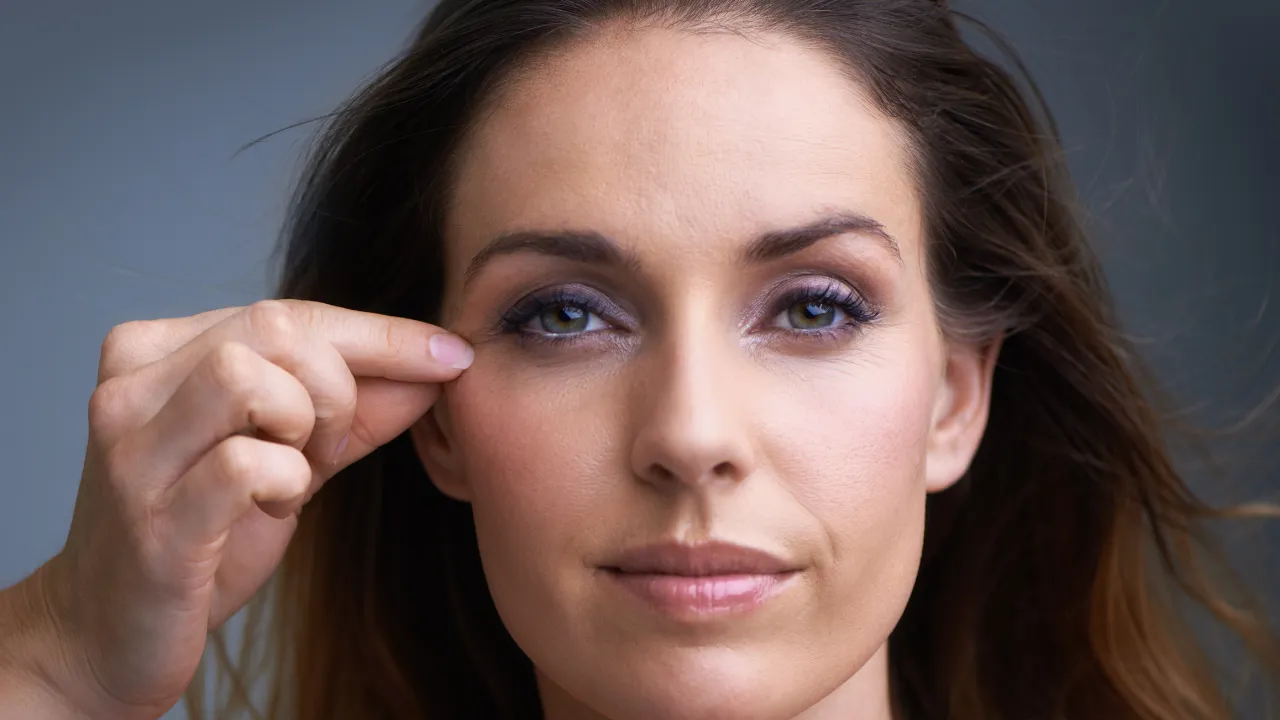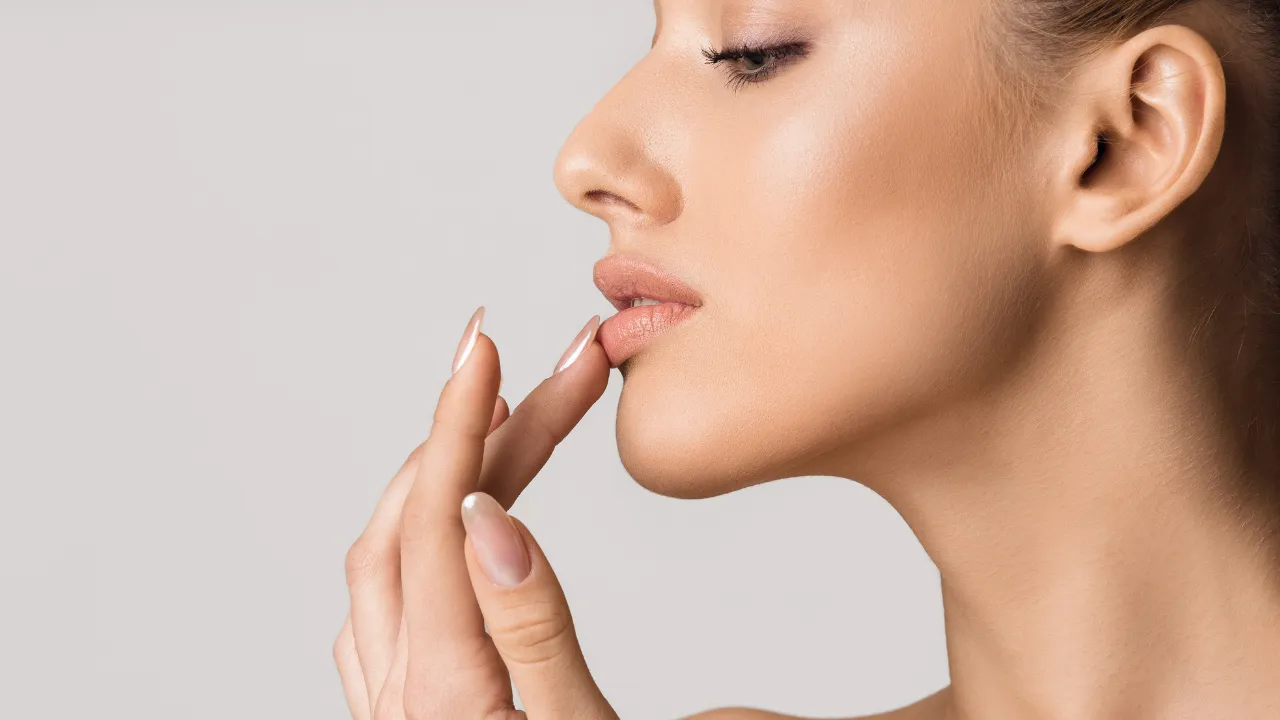Key Takeaways
- Lower blepharoplasty is generally safe when performed by an experienced surgeon but carries specific risks like eyelid retraction and dry eyes.
- Patients can expect most swelling and bruising to resolve within 7–14 days, with results lasting 5–10 years.
- Proper preparation and post-surgery care, such as avoiding smoking and protecting the eye area, can improve recovery outcomes.
- Alternative non-surgical treatments like fillers or laser therapy may be suitable for those not ready for surgery.
- Consultations with Dr. Kopelman include a thorough assessment and personalized surgical plan to ensure natural-looking results.
Many patients ask Dr. Kopelman at Kopelman Aesthetic Surgery, “is lower blepharoplasty dangerous?” This article explores the risks, recovery, and cost of this delicate plastic surgery. Dr. Kopelman’s experience ensures patients receive expert guidance on achieving a refreshed under-eye area.
Table of Contents
ToggleIs Lower Eyelid Surgery Safe?
Lower eyelid surgery is safe when performed by a highly skilled surgeon. But as with all surgical procedures, there are risks to consider. Knowing these risks helps patients make informed decisions.
What Are the Disadvantages of Lower Blepharoplasty?
Disadvantages of lower blepharoplasty include:
- Swelling and bruising lasting several days after surgery
- Temporary tightness or numbness around the eyes
- Rare changes, such as dry eyes during healing
This procedure is often best for patients with under-eye puffiness or sagging skin, but setting realistic expectations is important.
Risks and Complications of Lower Blepharoplasty
Understanding blepharoplasty complications can help patients feel more prepared. Dr. Kopelman explains how careful technique lowers the chance of problems.
For patients considering both lower and upper blepharoplasty procedures, it’s important to compare risks and benefits with an experienced surgeon.
Why Lower Eyelid Surgery Is Riskier Than Upper Blepharoplasty
The lower eyelid is thinner and less supported than the upper lid. This increases lower blepharoplasty risks like ectropion or visible hollowing if too much fat is removed.
In contrast, upper eyelid procedures are safer because of stronger tissue and less tension on incisions.
Ectropion, Retraction, and Other Issues
Ectropion can cause irritation and watery eyes. Excessive fat removal or removing excess skin during surgery may lead to this issue. Dr. Kopelman uses advanced support techniques to minimize such risks.
Lower vs. Upper Blepharoplasty: Comparing Risks
Lower blepharoplasty carries specific challenges:
- More visible scleral show if performed aggressively
- Longer recovery than upper eyelid surgeries
- A higher chance of functional issues like eyelid retraction
Scarring, Scleral Show, and Vision Problems
Incisions placed in natural creases help hide scars. Temporary blurred vision from swelling may occur, but it often resolves in weeks.
Lower Eyelid Surgery Gone Wrong: Warning Signs
Watch for these signs:
- Worsening swelling after two weeks
- Redness, pain, or discharge from the incision
- Difficulty closing your eyes fully
- Vision changes, such as blurriness or double vision
Seek medical advice right away if these symptoms appear.
Real-World Examples of Complications
Issues like hollowing or eyelid drooping may require revision surgery. Dr. Kopelman stresses follow-up visits to monitor healing and address any complications from eyelid surgery blepharoplasty promptly.
How Surgeons Reduce Surgery Risks
To reduce risks, Dr. Kopelman uses:
- Minimal fat and skin removal
- Techniques to support eyelid position
- Post-op instructions like icing and avoiding strenuous activity
Dr. Kopelman’s Approach to Lower Blepharoplasty
Dr. Kopelman tailors each procedure to the patient’s anatomy and goals. He often uses the transconjunctival method to avoid external scars. For patients with sagging skin, he may combine skin tightening with fat removal for balanced results. His methods lower the risk of common blepharoplasty surgery complications.
What to Expect During Your Consultation
A consultation with Dr. Kopelman is the first step toward successful surgery. During this visit, he will:
- Review your medical history and current eye health
- Examine your under-eye area to assess skin elasticity, fat distribution, and muscle tone
- Discuss your aesthetic goals and create a tailored surgical plan
- Explain potential risks and answer your questions about the procedure
This personalized approach ensures patients fully understand the process and set realistic expectations.
Preparation Tips Before Lower Blepharoplasty
Dr. Kopelman recommends:
- Stopping smoking two weeks before surgery
- Avoiding blood thinners unless advised
- Preparing your home with ice packs and extra pillows for head elevation
Techniques and Candidacy for Lower Blepharoplasty
As a leading oculoplastic surgeon, Dr. Kopelman has performed many successful plastic surgery procedures. His approach ensures a natural look while keeping the function of the eyelid intact.
Transcutaneous vs. Transconjunctival Approaches: Which Is Safer?
- Transcutaneous: An external cut allows skin tightening but may slightly increase visible scarring.
- Transconjunctival: A cut inside the eyelid avoids visible scars and is ideal for patients without loose skin.
How to Qualify for Eyelid Surgery
Good candidates are:
- Healthy adults without active eye issues
- People with puffiness or sagging under the eyes
- Those who can follow aftercare closely
When to Contact Your Surgeon During Recovery
Call your surgeon if you notice:
- Worsening pain after the first week
- Redness or discharge from the incision
- Blurred vision or trouble closing your eyes
- Heat or swelling that does not improve
Recovery and Expected Results
Most swelling and bruising improve within 7–14 days. Patients usually return to light daily activities after two weeks.
Healing Timeline: What to Expect
- Days 1–2: Apply ice packs as directed
- Days 3–7: Clean the area gently as swelling reduces
- Days 7–14: Bruising fades; sutures are removed if needed
- Weeks 3–4: Eyelid contour begins to settle
Lower Blepharoplasty Recovery Photos Day by Day
Seeing recovery photos helps patients understand what to expect as they heal.
Lifestyle Tips for a Smooth Recovery
Recovering well from lower blepharoplasty requires both medical care and healthy habits:
- Sleep with your head elevated to reduce swelling
- Stay hydrated and eat nutrient-rich foods to support healing
- Avoid smoking and alcohol, which slow recovery
- Use sun protection to protect the delicate eye area during healing
Following these tips can enhance recovery and help achieve lasting results.
Is Lower Blepharoplasty Painful or Permanent?
Pain is usually mild and well-controlled with medication. Results last for many years, although the natural aging process will continue.
Before and After: Lower Blepharoplasty Results
Dr. Kopelman shares before-and-after photos to show smoother, more youthful under-eye areas achieved with his techniques.
Is Lower Blepharoplasty Worth It?
This surgery helps many patients feel more confident by improving under-eye appearance. Patients should carefully consider risks and benefits.
How Effective Is It for Long-Term Results?
Lower blepharoplasty removes puffiness and tightens skin. Most patients enjoy results lasting 5–10 years.
Do People Regret Lower Blepharoplasty?
Most patients are satisfied with their results. A few may need minor revision for issues like asymmetry or eyelid retraction.
What Is the Best Age for Lower Blepharoplasty?
This procedure works for adults of all ages, from younger patients with puffiness to older ones with loose skin.
Alternative Treatments for Under-Eye Rejuvenation
Non-surgical options include:
- Fillers for hollows under the eyes
- Laser resurfacing to smooth fine lines
- Radiofrequency treatments for skin tightening
These may be part of an under-eye rejuvenation surgery plan for those not ready for surgery.
Common Myths About Lower Blepharoplasty
Myth 1: Results look unnatural.
Modern techniques focus on subtle enhancements, not overcorrection.
Myth 2: It’s only for older patients.
Younger patients also benefit, especially for genetic under-eye puffiness.
Myth 3: Recovery takes months.
Most patients resume normal activities within two weeks.
Dr. Kopelman helps patients separate fact from fiction and feel confident about their choices.
Cost and Value of Lower Blepharoplasty
Costs depend on location, the surgeon’s experience, and technique. Cosmetic procedures are usually not covered by insurance. Schedule a consultation today with Dr. Kopelman.
How long do results last?
Results can last 5–10 years, but aging will still occur.
Can it be combined with other treatments?
Yes. It’s often combined with upper eyelid blepharoplasty or laser treatments for full rejuvenation.
Will insurance cover this procedure?
Insurance typically only covers functional issues, not cosmetic improvements.

